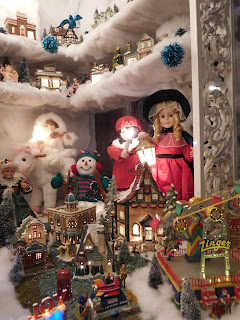In my youth, someone gave me a subscription to Sports Illustrated. I don't know how long it was supposed to last, but I think I recieved every issue from the day my first puberty began until I was engaged. I don't remember why I didn't renew it. Perhaps, not having a lot of money, I had to choose between it and and something else--was it a Campagnolo part? Or something my fiancee and I would need for our new household?
Whatever the reason for my cancellation, it had nothing to do with the most popular issue published every year. Back then, it was released in January, around the second or third week. By now, you probably know what I'm talking about: The Sports Illustrated Swimsuit Issue.
I was not at all interested in the very scantily-clad images of Cheryl Tiegs and and Carol Alt and Elle Macpherson posing in exotic locales. Really, I wasn't. I was reading about the NBA and NHL All-Star games, which were usually played around the time The Issue came out.
I swear it's true.... ;-)
Anyway...I was reminded of the SISI when I saw this:
Can you say, "Ooh-la-la"? About the bicycle, I mean?
Seriously, Abbey Lee Kershaw looks great on or with--or without--any bike. But take a look at those fenders. Those reflectors The bags on the sides of the rack. They're almost as cool as the tatoo on her ankle. (And I don't even like tatoos, generally.
There's one problem, though, with those photos. No outfit is complete without a faabulous pair of shoes. For Abbey Lee, they wouldn't be just a fashion statement. I mean, would you ride those pedals barefoot?
Really, now.
Whatever the reason for my cancellation, it had nothing to do with the most popular issue published every year. Back then, it was released in January, around the second or third week. By now, you probably know what I'm talking about: The Sports Illustrated Swimsuit Issue.
I was not at all interested in the very scantily-clad images of Cheryl Tiegs and and Carol Alt and Elle Macpherson posing in exotic locales. Really, I wasn't. I was reading about the NBA and NHL All-Star games, which were usually played around the time The Issue came out.
I swear it's true.... ;-)
Anyway...I was reminded of the SISI when I saw this:
Can you say, "Ooh-la-la"? About the bicycle, I mean?
Seriously, Abbey Lee Kershaw looks great on or with--or without--any bike. But take a look at those fenders. Those reflectors The bags on the sides of the rack. They're almost as cool as the tatoo on her ankle. (And I don't even like tatoos, generally.
There's one problem, though, with those photos. No outfit is complete without a faabulous pair of shoes. For Abbey Lee, they wouldn't be just a fashion statement. I mean, would you ride those pedals barefoot?
Really, now.



























